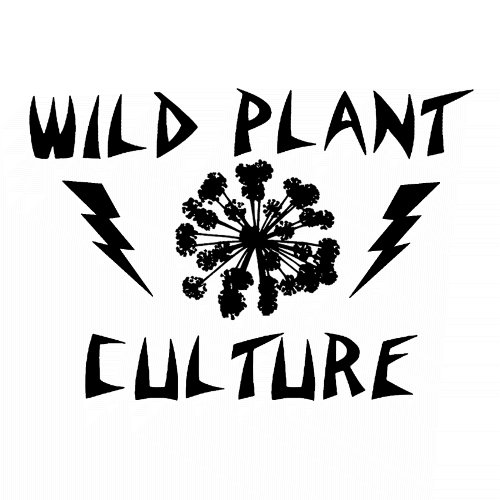Storm in Cohosh Grove

There's a small oaky knoll where we live that has by far the richest and rarest plant community on the property. We call it "Cohosh Grove". Black cohosh, roundlobe hepatica, bloodroot, Virginia snakeroot, rue anemone, alumroot, white milkweed, hispid buttercup, rattlesnake plantain, perfoliate bellwort, and other notable herbs live here.
The cohosh grows in a thick stand and flowers, en masse, every other year or so. Hundreds of stems of these "fairy candles" are illuminated by low afternoon light in the midsummer, blooming luminously white at about chest-high.
The soils are rocky and thin, but rich, not bony. The diminutive herbs, hepaticas and Virginia snakeroot especially, nestle in among the chipped-up metamorphosed shales, and the maidenhair fern straddles the thin soil over a low protruding plateau of diabase bedrock.
There is one other place nearby where Cohosh grows and blooms in great profusion, up on the Higgins property ridgetop back behind the Nelsons. I once walked a circle around the colony there and found it to cover over 4 acres.
Cohosh is not a fast colonizer by seed; by all accounts its dispersal distance is limited to the immediate surroundings of the parent plant except in exceptional circumstances. One scientific account I read described its effective dispersal distance as "0 meters" per year. I told this to Rachel on a hike a few years back and she disagreed, showing how the 3 to 5 foot tall flowering stems gradually became decumbent through the autumn, depositing small black seeds from the rattle-like seedheads, one to two meters from the parent plant.
Nevertheless, the fundamentals remain: black cohosh is dispersed neither by bird, mammal, reptile, nor wind, except in rare and accidental circumstances.
So how long does it take for a four-acre grove of cohosh to arise, presuming a single parent, spreading largely by seed, one to two meters every year or two, tacking in some extra time for these long-lived and large-rooted forest herbs to reach sexual maturity? The math is beyond me, here, but long enough, I'd presume, to qualify the plants as "ancient" and the colony as indicative of some long-standing suitability of the site where they are growing.
I've noted for a while now the wide spacing of the trees in Cohosh Grove, and come to understand black cohosh as a plant the flowers most often in a partially open canopy. Meier, Bratton, and Duffy, in a study of the related Cimicifuga americana, characterize it as an obligate canopy gap bloomer: "Under the closed canopy we found 57 individuals not fruiting and 3 fruiting. Within canopy gaps we found 45 not fruiting and 15 fruiting."[1]
Presuming the same to be true for the very similar black cohosh, Cimicifuga racemosa [= Actaea racemosa, now], I'd think of large flowering colonies of it to be indicators, with exceptions, of old growth structure forests, wooded sites where large but widely spaced trees dominate, and sapling growth is reduced, presumably by the inhibitive roots of the older, giant trees, and to some degree, perhaps, by the thick growth of forest herbs, sedges, and colonial shrubs.
In the same study cited above, the authors compare the gaps created by recently logged forest with those that evolve for structural reasons in older forests:
"A...modification caused by logging is the distribution of light on the forest floor. Clearcuts change from high light to very limited light as succession closes the canopy. Canopy gaps are actually rare in younger successional forests and probably continue to decline in the Appalachians until at least age 80 yr. Stands may have to be 150-200 yr old before gap-phase processes are completely reestablished. Canopy gaps produce not only pits and mounds and fallen logs that provide new microhabitats for herbs, but also supply small areas of elevated but not extreme radiation."
* * *

Last night, Tropical Storm Sandy battered our house, shaking the walls and extinguishing candles we had lit inside. Outside, we heard the dull thud of limbs and trunks wrenched from on high, crashing into the sodden ground.
This morning, walking up the drive, I noticed one, then many, trees down in Cohosh Grove. The thin soils over bedrock must have relinquished their trees in a burst of torrential wind, and now four red oaks and a white oak lay, in identical orientation, on a bier of fallen leaves and Pennsylvania sedge.
This little knoll, barely elevated above the surrounding landscape, had once again shed its shade. Next spring, the unfurling stems of cohosh will be bathed in the increased sunlight of their own ridgetop glade, all open sky and forest meadow.
The loss of the trees is bitter, especially the gnarled and twisted white oak that had evidently survived the loss of its main trunk once before, many decades ago. But I think I have a better understanding of why Cohosh Grove is so rich in forest herbs, and part of it has to do with the paucity of forest trees, the increased solar radiation, and the tendency of the knoll, every few decades perhaps, to trade oaks for cohosh.

[1] Meier, A.J., Bratton, S.P., and Duffy, D.C. "Possible Ecological Mechanisms for Loss of Vernal-Herb Diversity In Logged Eastern Deciduous Forest". Ecological Applications Vol. 5. No. 4
